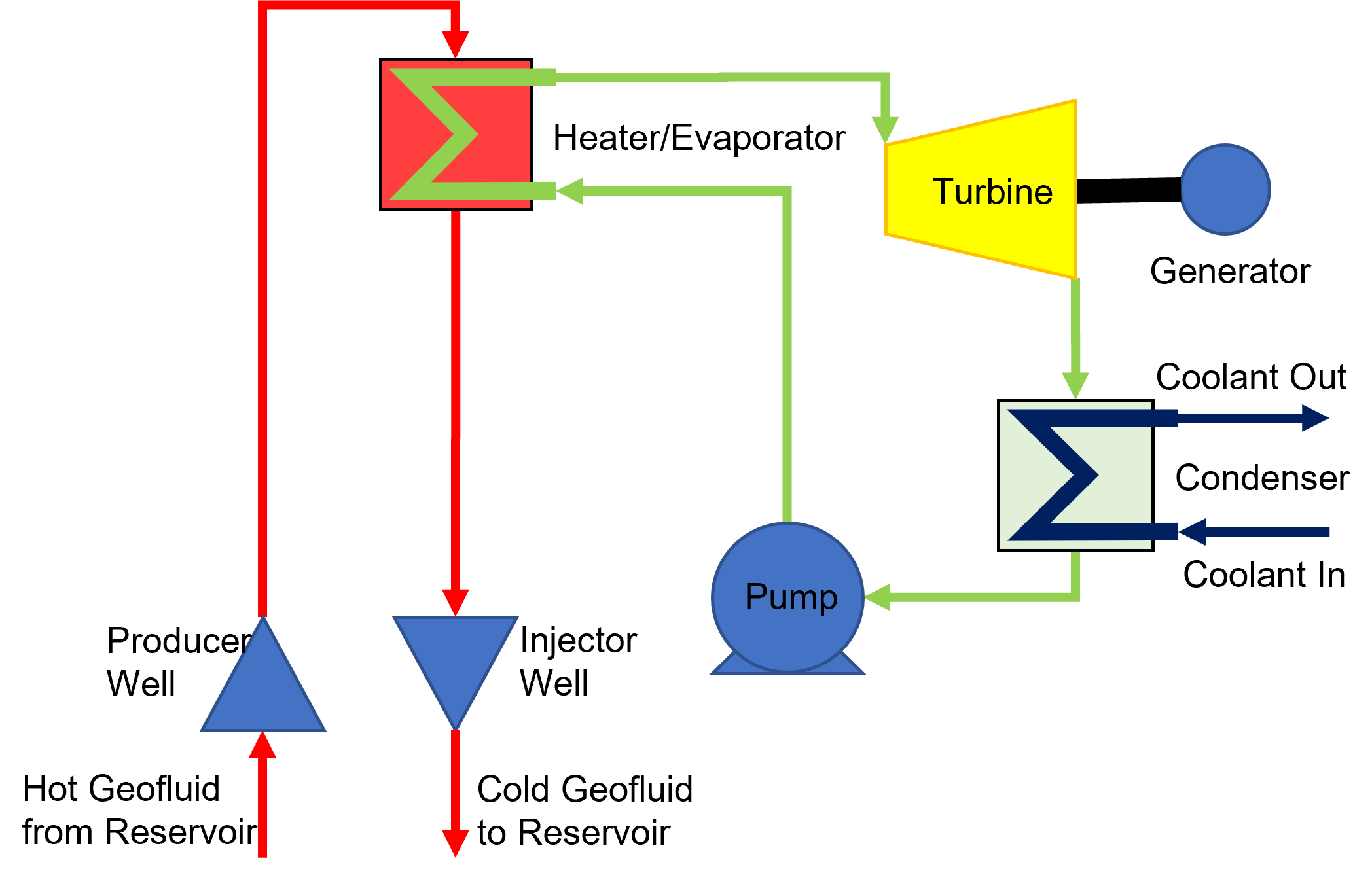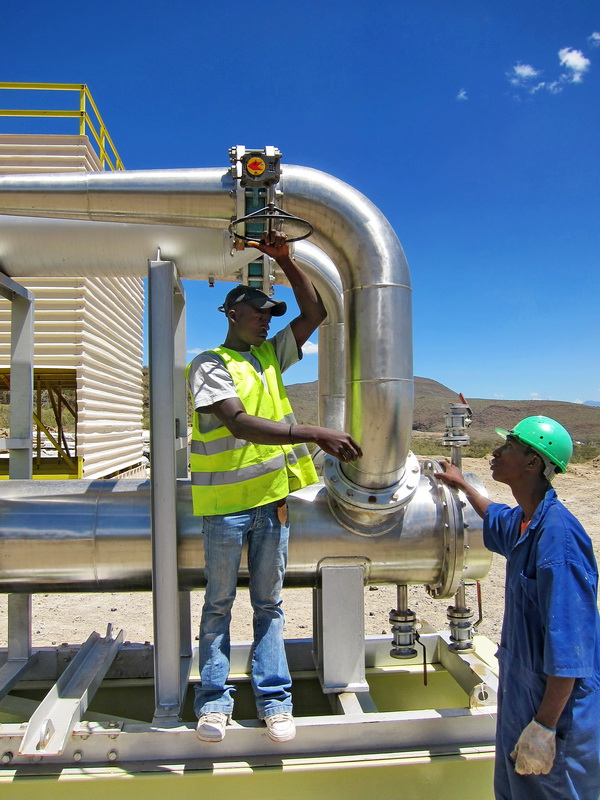|
Te Huka Power Station
The Te Huka Geothermal Power Station, also known as Tauhara One, is a 23 MW binary cycle geothermal power station situated near Taupo, New Zealand New Zealand ( mi, Aotearoa ) is an island country in the southwestern Pacific Ocean. It consists of two main landmasses—the North Island () and the South Island ()—and over 700 smaller islands. It is the sixth-largest island count .... The power station is operated by Contact Energy. In July 2008, Contact Energy announced that the contract for supply and construction of the binary cycle equipment was awarded to Ormat Industries, Ormat Technologies. The plant is powered with steam and fluid from the Tauhara steamfield, and all used geothermal fluid is reinjected back into the edge of the steamfield. A 33,000-volt line connects the power station to Transpower's Wairakei Power Station, Wairakei substation, injecting the station's electricity into both Unison Networks, Unison's Taupo distribution network and the n ... [...More Info...] [...Related Items...] OR: [Wikipedia] [Google] [Baidu] |
Contact Energy
Contact Energy Limited is a New Zealand electricity generation, electricity generator, a wholesaler of natural gas, and a retailer of electricity retailing, electricity, natural gas, broadband and Liquefied petroleum gas, LPG. It is the second-largest electricity generator in New Zealand (after Meridian Energy), generating 23% of all electricity in 2014, and has the second-largest market share (22%) of electricity retailers (after Genesis Energy Limited, Genesis Energy). Contact owns and operates five geothermal power stations near Taupo, natural-gas turbine facilities at Hamilton and at Stratford in Taranaki, two hydroelectric dams on the Clutha River, and a diesel fuelled station near Napier. Contact originated with the partitioning of the Electricity Corporation of New Zealand in 1996, and publicly Listing (finance), listed in 1999. History Contact Energy was incorporated on 8 November 1995 and became a state-owned enterprise on 18 November 1995. It commenced operations on ... [...More Info...] [...Related Items...] OR: [Wikipedia] [Google] [Baidu] |
Binary Cycle Power Plant
A binary cycle is a method for generating electrical power from geothermal resources and employs two separate fluid cycles, hence binary cycle. The primary cycle extracts the geothermal energy from the reservoir, and secondary cycle converts the heat into work to drive the generator and generate electricity. Binary cycles permit electricity generation even from low temperature geothermal resources (<180°C) that would otherwise produce insufficient quantities of steam to make flash power plants economically viable. However, due to the lower temperatures binary cycles have low overall efficiencies of about 10-13%. Introduction [...More Info...] [...Related Items...] OR: [Wikipedia] [Google] [Baidu] |
New Zealand
New Zealand ( mi, Aotearoa ) is an island country in the southwestern Pacific Ocean. It consists of two main landmasses—the North Island () and the South Island ()—and over 700 smaller islands. It is the sixth-largest island country by area, covering . New Zealand is about east of Australia across the Tasman Sea and south of the islands of New Caledonia, Fiji, and Tonga. The country's varied topography and sharp mountain peaks, including the Southern Alps, owe much to tectonic uplift and volcanic eruptions. New Zealand's capital city is Wellington, and its most populous city is Auckland. The islands of New Zealand were the last large habitable land to be settled by humans. Between about 1280 and 1350, Polynesians began to settle in the islands and then developed a distinctive Māori culture. In 1642, the Dutch explorer Abel Tasman became the first European to sight and record New Zealand. In 1840, representatives of the United Kingdom and Māori chiefs ... [...More Info...] [...Related Items...] OR: [Wikipedia] [Google] [Baidu] |
Ormat Industries
Ormat Technologies, Inc. is an international company based in Reno, Nevada, United States. Ormat supplies alternative and renewable geothermal energy technology. The company has built over 190 power plants and installed over 3,200 MW. As of January 2021 it owns and operates 933 MW of geothermal and recovered energy based power plants. Ormat has supplied over 1000 turbochargers worldwide: North America, South America, Europe, Australia, and Asia. The company's products also include turbines, generators, and heat exchangers. The company's share is a dual stock traded on the Tel Aviv Stock Exchange since 1991 and on the New York Stock Exchange since 2004 under the symbol ORA, and is part of the Tel Aviv 35 Index and the Tel Aviv Tech-Elite Index The company's main production facilities are located in Yavne, Israel. History Ormat was established in 1965 as Ormat Turbines Ltd. (later renamed Ormat Industries), in Yavne, Israel, by engineer Lucien Bronicki, the company's chairm ... [...More Info...] [...Related Items...] OR: [Wikipedia] [Google] [Baidu] |
Wairakei Power Station
The Wairakei Power Station is a geothermal power station near the Wairakei Geothermal Field in New Zealand. Wairakei lies in the Taupo Volcanic Zone. History The power station was built in 1958, the first of its type (wet steam) in the world, and it is currently owned and operated by Contact Energy. A binary cycle power plant was constructed in 2005 to use lower-temperature steam that had already gone through the main plant. This increased the total capacity of the power station to 181MW. The Wairakei power station is due to be phased out from 2013, replaced by the Te Mihi geothermal power station. The Poihipi Power Station was built in 1996 at a nearby site in the same field. Units Wairakei A station * Unit 1 – 11.2 MW intermediate pressure * Unit 4 – 11.2 MW intermediate pressure * Unit 7 – 11.2 MW low pressure * Unit 8 – 11.2 MW low pressure * Unit 9 – 11.2 MW low pressure * Unit 10 – 11.2 MW low pressure Units 2, 3, 5 and 6 were ... [...More Info...] [...Related Items...] OR: [Wikipedia] [Google] [Baidu] |
Unison Networks
Unison Networks Limited (Unison) is an electricity distribution and fibre optic network company, based in Hastings, New Zealand. Unison owns and manages the electricity lines network and the fibre optic network in the Hawke's Bay, Rotorua and Taupo regions. The service area covers 12,000 km2. The Unison group also provides electrical, fibre, civil, and vegetation contracting services; manufactures electrical products; and operates an insurance company. Ownership The company is 100% owned by the Hawke's Bay Power Consumers' Trust on behalf of electricity consumers in the Hawke's Bay area. The Trust is made up of five elected Trustees and operates under a Trust Deed. Distribution network The Unison subtransmission and distribution network is supplied from the national grid via Transpower substations. Seven Transpower grid exit points (GXPs) supply the Unison network: Redclyffe, Fernhill, and Whakatu for Napier-Hastings; Wairakei for Taupo; and Rotorua, Owhata, and Takuren ... [...More Info...] [...Related Items...] OR: [Wikipedia] [Google] [Baidu] |
List Of Power Stations In New Zealand
This is a list of power stations in New Zealand. The list is not exhaustive – only power stations over 0.5 MW and significant power stations below 0.5 MW are listed. Power plants in New Zealand have different generating roles – for baseload, intermediate or peaking. Baseload generators are those that run continuously (except for maintenance), and include all geothermal and run-of-the-river hydroelectric plants, which must 'use it or lose it'. Intermediate generators are load-following power plants. Peaking power plants generate only for minutes or hours at a time, during the sharpest peaks in electricity demand. Bioenergy Geothermal Hydroelectric Source: Decommissioned hydroelectric Heritage hydroelectric Fossil-fuel thermal Source: Wind Sources: Solar Grid battery storage Proposed power stations Source: See also *Energy in New Zealand *Electricity sector in New Zealand * List of New Zealand spans *New Zealand electricity market ... [...More Info...] [...Related Items...] OR: [Wikipedia] [Google] [Baidu] |
Geothermal Power In New Zealand
Geothermal power in New Zealand is a small but significant part of the energy generation capacity of the country, providing approximately 17% of the country's electricityElectricity in New Zealand 2018 (from the New Zealand Electricity Authority. Accessed 2019-17-06.) with installed capacity of over 900 MW.Geothermal Energy and Electricity Generation (from the New Zealand Energy Efficiency and Conservation Authority website. Accessed 2019-17-06.) New Zealand, like only a small number of other countries w ... [...More Info...] [...Related Items...] OR: [Wikipedia] [Google] [Baidu] |
Tauhara Power Station
The Tauhara Power Station is a geothermal power station north of Taupō in New Zealand. Previously known as Tauhara 2, the project is being developed by Contact Energy and Tauhara Moana Trust and is expected to be operational in the third quarter of 2024. Background Stage 1 of the wider Tauhara project is operational as the Te Huka Power Station. This is a 23 MW binary plant supplied with geothermal steam from the Tauhara field. Tauhara Stage 2 The application for resource consents for a 250 MW power station was submitted in February 2010. The Minister for the Environment determined that this project was one of national significance, and referred it to an independent Board of Inquiry. The resource consents were granted in December 2010. It was the first infrastructure project to be processed under the new Board of Inquiry process administered by the Environmental Protection Authority. In August 2019 Contact Energy began drilling four wells to further characteriz ... [...More Info...] [...Related Items...] OR: [Wikipedia] [Google] [Baidu] |



